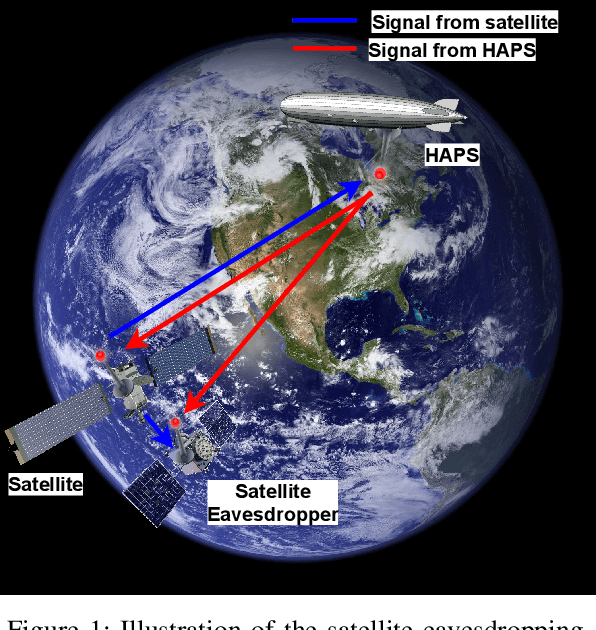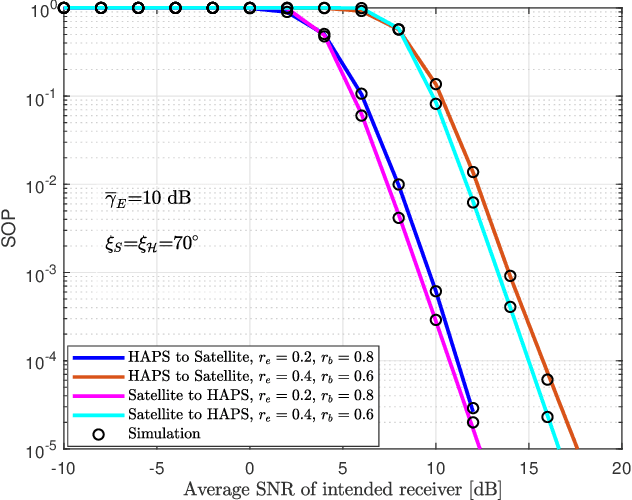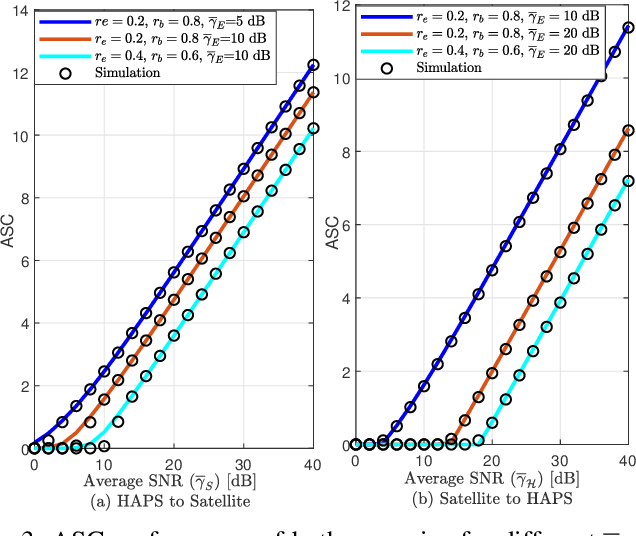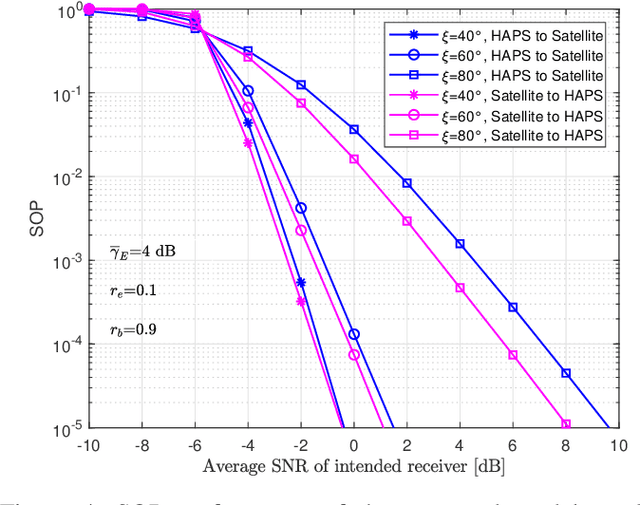Optical Satellite Eavesdropping
Paper and Code
Dec 09, 2021



In recent years, satellite communication (SatCom) systems have been widely used for navigation, broadcasting application, disaster recovery, weather sensing, and even spying on the Earth. As the number of satellites is highly increasing and with the radical revolution in wireless technology, eavesdropping on SatCom will be possible in next-generation networks. In this context, we introduce the satellite eavesdropping approach, where an eavesdropping satellite can intercept optical communications established between a low Earth orbit (LEO) satellite and a high altitude platform station (HAPS). Specifically, we propose two practical eavesdropping scenarios for satellite-to-HAPS (downlink) and HAPS-to-satellite (uplink) optical communications, where the eavesdropper satellite can eavesdrop on the transmitted signal or the received signal. To quantify the secrecy performance of the scenarios, the average secrecy capacity (ASC) and secrecy outage probability (SOP) expressions are derived and validated with Monte Carlo (MC) simulations. We observe that turbulence-induced fading significantly impacts the secrecy performance of free-space optical (FSO) communication.
 Add to Chrome
Add to Chrome Add to Firefox
Add to Firefox Add to Edge
Add to Edge